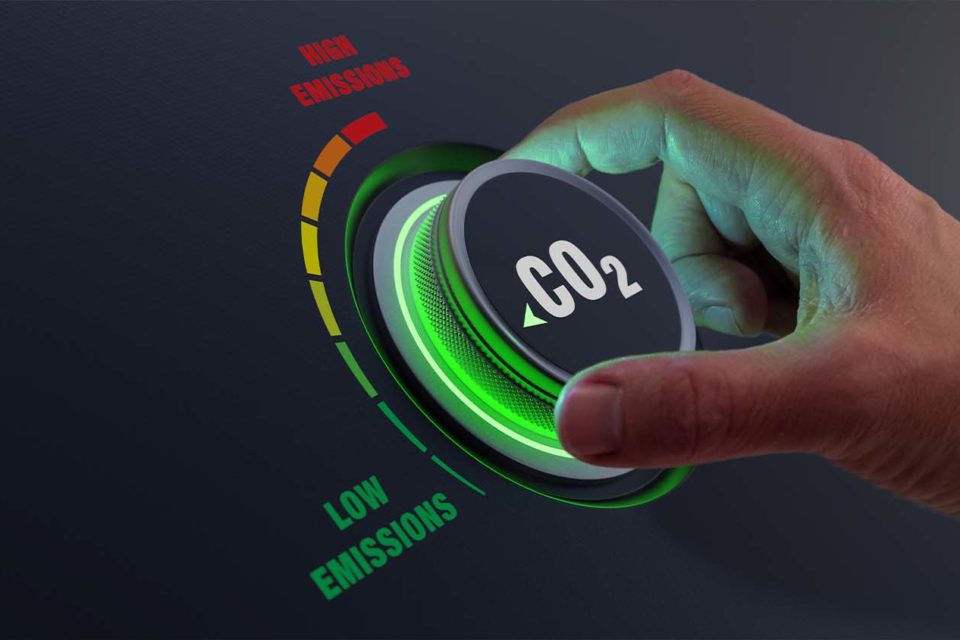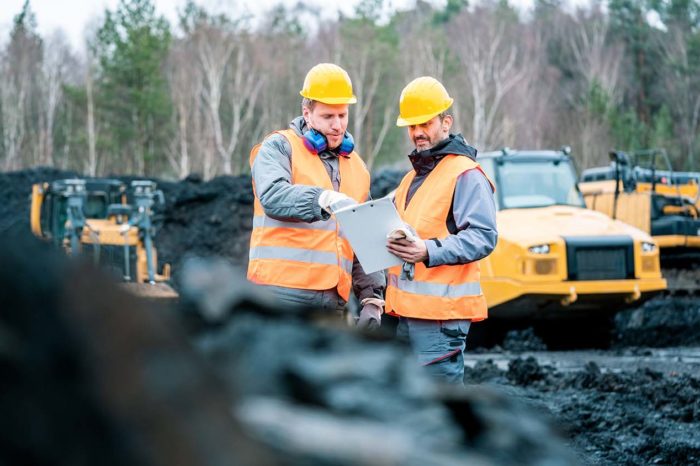Project Tundra: Forging the CCS Frontier

By Mac McLennan, Minnkota Power Cooperative
Out on the open prairies of North Dakota, energy innovation is happening.
Leading scientists, engineers and other energy experts are gathering in this rural area to develop technologies that have the potential to dramatically reduce emissions around the world. Excitement and enthusiasm is building as the vision for Project Tundra is becoming clearer at the coal-based Milton R. Young Station.
Minnkota Power Cooperative has been pursuing the development of Project Tundra over the last six years. The project aims to equip the Young Station with next-generation technologies to capture approximately four million tons of carbon dioxide (CO2) emissions annually. The CO2 would then be safely and permanently stored in deep geologic formations more than a mile underground near the plant site. The Project Tundra facility’s 90 percent capture rate would remove an amount of CO2 equivalent to taking 800,000 gasoline-fueled vehicles off the road.
For Minnkota and many other utilities around the country, there is a recognition that public policy, regulation and consumer demands are all pointing toward a lower carbon future. At the same time, grid stability issues across the United States – from a heatwave that crippled California’s electric grid to a February deep freeze that left Texans without power for days – are reemphasizing the importance of reliable and resilient electricity generation resources. Minnkota leaders believe that both of these goals can be met through the rapid development and deployment of carbon capture and storage (CCS) technology.
Development of the Capture Facility
Minnkota is working with Fluor Corporation to develop the Project Tundra carbon capture facility. The partners are nearing completion of a Front-End Engineering and Design (FEED) study. The study will provide an advanced engineering plan for building the capture technologies at the Young Station, as well as detailed economics related to construction and operation. The FEED study, which is anticipated to be complete in late 2021, will provide all information needed to initiate project financing, gain approval for all required permits and finalize the project construction schedule.
The process for capturing CO2 from the Young Station follows three basic steps:
- Step 1: Flue gas from the Young Station will be diverted to a scrubber, which cools the gas and removes impurities. The gas is then sent through piping to an adjacent large absorber unit for the CO2 capture to take place.
- Step 2: The gas flows into the bottom of the absorber unit, which is filled with stainless steel structural packing. As the gas rises through the packing, it comes into contact with an amine-based liquid solvent. The amine bonds with the CO2 and removes it from the flue gas.
- Step 3: After the amine solvent has absorbed the CO2, it is pumped to a regeneration unit. There, heat is used to break down the CO2 bonds with the solvent, and releases pure CO2 in a gaseous state. Finally, the CO2 is sent to a compressor where it is prepared for deep geologic storage. The solvent, now free of CO2, is returned for another cycle in the absorber unit.
Ideal Geology
North Dakota is uniquely positioned with ideal geology for CO2 storage. A deep porous rock layer will hold the CO2 in place, while overlying cap rock layers will seal the CO2 in storage zones. A wide array of monitoring technologies will be used to track CO2 movement in the subsurface, including down-hole and surface sensors.
Research has been conducted on the underground storage facility with leadership from the Energy and Environmental Research Center (EERC) at the University of North Dakota. In 2020, two test wells were drilled down 10,000 feet near the Young Station to retrieve rock core samples and other geologic data, while additional seismic and geophysical survey work was also conducted around the Young Station. This site-specific data builds on two decades of research the EERC has conducted on CO2 storage in North Dakota.
Safety and environmental stewardship are vitally important to the Project Tundra partners. All data retrieved were compiled and submitted as part of the permit application this spring. The permit helps ensure the safe injection of CO2, protection of groundwater resources and the constant monitoring of the CO2 to confirm it remains in the storage zone.
Minnkota has invested significant time working with impacted landowners and community members near Young Station and the underground storage area. Consistent education and communication have contributed to strong support for Project Tundra and the vast majority of landowners signing pore space leases to allow for CO2 to be stored deep under their land. Work will continue on this front as the permitting process moves ahead in 2021.
Financial Modeling
Historically, the hurdle for CCS projects has been economics. Now, however, Congress has opened the door with 45Q tax credits, which work similarly to the tax credits that have been enjoyed by wind and solar projects for many years. These tax credits will cover the vast majority of Project Tundra’s estimated $1.1 billion construction cost and future operating expenses. This will significantly limit electric rate impacts for consumers in Minnkota’s system.
The 45Q tax credit provides $50 per ton of CO2 that is permanently stored underground over a 12-year period. As a not-for-profit cooperative, Minnkota is not able to utilize these credits. Therefore, partnerships will need to be formed with large financial institutions. That process has begun in earnest in 2021, while additional advocacy work is ongoing to enhance the tax credits or restructure them to provide direct payments to the project.
Importance of the Young Station
The Young Station is the most reliable and resilient resource in Minnkota’s generation portfolio, which also includes wind and hydro. This large power plant located 35 miles from Bismarck, N.D., has operated dependably through numerous extreme weather events, which has helped ensure homes stay energized, hospitals are running and essential businesses are able to meet the needs of local communities.
The Young Station has many attributes that make it much more dependable than other resources. As a mine-mouth generation facility, the plant is located adjacent to the coal mine, which ensures that fuel can be consistently delivered without issues. Additionally, all of the Young Station’s major components are covered, insulated and weatherized to ensure they can operate in extreme cold or heat.
During its decades of operation, the Young Station has been well-maintained and able to run for the majority of the hours each year. In fact, in 2020, both generating units were available to produce power more than 93 percent of the time. From an environmental standpoint, about $425 million has already been invested in emission control technologies to meet or exceed current air quality standards. This includes significant reductions in sulfur dioxide, nitrogen oxides and mercury emissions.
Employees at the Young Station take great pride in the operation of the facility. Project Tundra would help preserve 360 good-paying jobs at the plant and coal mine, in addition to the countless local support contractors and companies. If the project moves ahead, it would add approximately 800 temporary construction jobs and 30-40 permanent positions operating the capture facility.
Across North Dakota, there is still an 800-year supply of coal that is currently accessible and economically feasible to recover. The use of this resource contributes to thousands of jobs and millions of dollars in annual tax revenue.
What’s Next?
The world is watching what happens on these North Dakota prairies. A decision on whether Project Tundra moves ahead will be made during the first half of 2022. The project could be operational by as early as 2025.
Project Tundra’s success thus far can be directly tied to strong support from the cooperative’s board of directors, member systems, local communities near the Young Station and employees. This commitment provides the opportunity to be innovative and navigate through obstacles and challenges. Bipartisan support from policy-makers at the state and federal levels has also been essential. Much of the research and development has been funded by the U.S. Department of Energy and the state of North Dakota’s Lignite Research Council. North Dakota has taken additional steps to ensure its policies and regulations promote the development of CCS within its borders. From a regulatory standpoint, North Dakota is one of only two states that have received approval from the U.S. Environmental Protection Agency to regulate geologic storage of carbon dioxide (also known as primacy).
Looking beyond state and national borders, the success of Project Tundra can help the deployment of next-generation emission control technologies around the world. With coal use on the rise in many developing nations, leadership must come from the United States to build, demonstrate and ultimately drive down the costs of commercial carbon capture projects. Project Tundra can serve as a blueprint for countries to unlock vast energy resources with low-to-no carbon emissions, addressing energy poverty and improving people’s lives on many levels.
As the energy industry continues to go through one of the most transformational periods in its history, it is vitally important that grid reliability and resiliency remain in focus. Project Tundra can help ensure dependable coal resources remain on the grid, while also providing meaningful progress toward ambitious climate goals.
Mac McLennan is president and CEO of Minnkota Power Cooperative.








